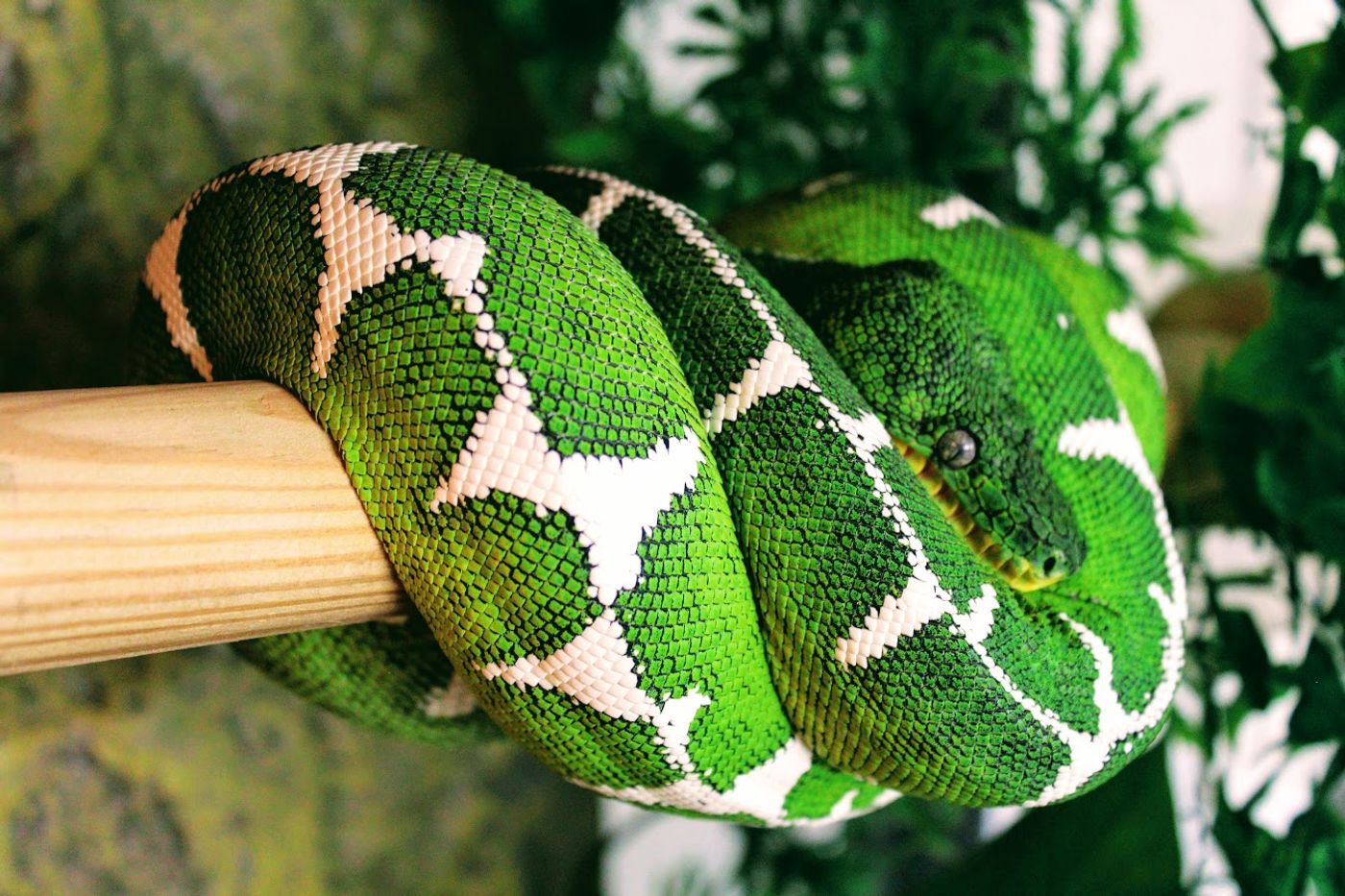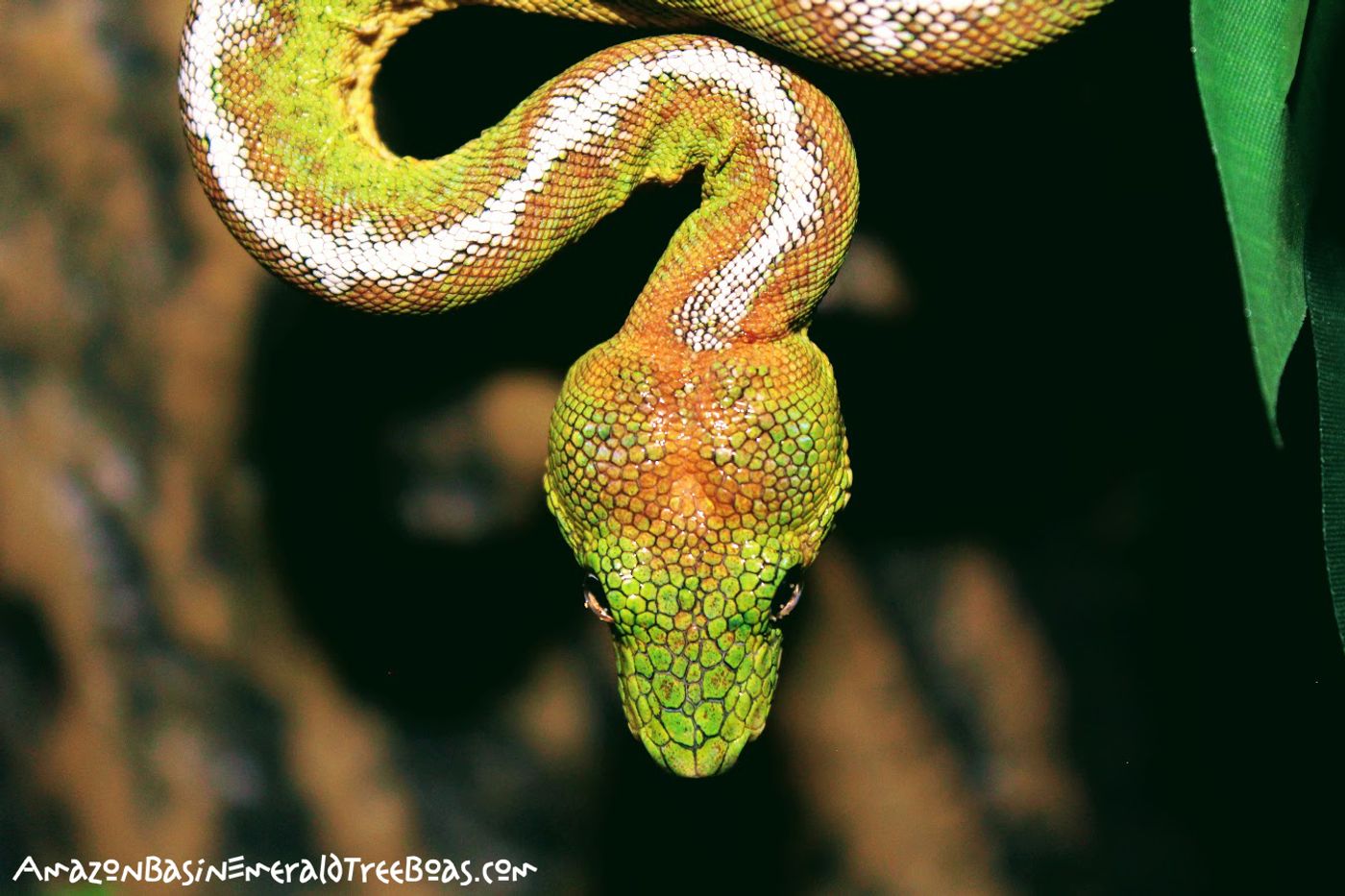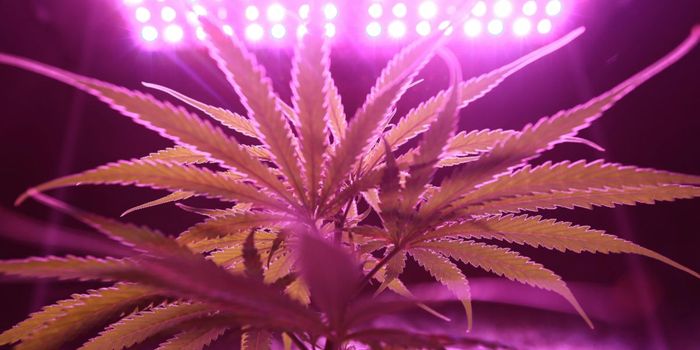The Recipe for Success: Breeding Amazon Basin Emerald Tree Boas
The Amazon Basin Emerald Tree Boa (Corallus batesii) can be found throughout South America, residing in the vast rainforests. Because they’re non-venomous, it’s almost no wonder that reptile lovers like to work their breeding magic on these serpents.
Image Credit: Amazon Basin Emerald Tree Boas
While the faint of heart probably shouldn’t handle these snakes for strikingly-obvious reasons, there are a few things that anyone wanting to dabble in Emerald Tree Boa breeding should know. Understanding how breeding an Emerald Tree Boa works can help make attempts to yield offspring more effective.
Setting the stage for breeding
Animal breeders always say that having an ideal enclosure is essential for breeding any animal, and this philosophy holds true for serpents like the Emerald Tree Boa. Ideally, the mating enclosure should be large enough to house two adult Emerald Tree Boas, as this provides sufficient room for each of the potential mates to move around freely after introduction.
Many breeders recommend having several different enclosures for moving the snakes in and out of throughout the breeding process. The male and female should each get their own enclosure until they reach sexual maturity, and you’ll also want places to put each of the offspring if mating succeeds.
Experts suggest putting the female in an enclosure that's big enough for two snakes and raising the male in a smaller one. Through this method, you can easily slide the male into the female’s enclosure during their breeding season and let nature take its course.
The enclosures will also require accommodations to make the snakes more comfortable. Not only will they need adequate airflow and food portions, but climate controls are also a must to guarantee near-constant temperatures year-round.
The key is to simulate natural breeding conditions as closely as possible in the snakes' enclosures. Many experts recommend a daytime high (DTH) temperature of 84º Fahrenheit and a nighttime low (NTL) temperature of between 72-78º Fahrenheit. Humidity should also be adjusted accordingly so that the enclosures don’t get too dry or saturated.
Introducing the snakes
So you’ve got the proper enclosure setup, but now you have to introduce the stars of your breeding act. Placing them together at just the right time under the appropriate conditions is essential.
Emerald Tree Boas reach sexual maturity by 3-4 years of age. If both snakes meet the requirements, then you can introduce the male to the female’s enclosure during the snake's breeding season, which typically occurs around November or December.
Fortunately, the female is already living inside and acquainted with the enclosure that you'll add the male into. That said, there's plenty of space for both snakes, and the female will be calm and comfortable throughout the introduction.
It won’t be long before the male locks eyes with the pretty lady and tries to court her with some slick moves of his own. The female’s response can provide insight into your luck – a hostile female can be a sign of bad news, while other forms of behavior signal a high likelihood of mating.
Mating will take its course over several weeks, but it’s wise to separate the snakes for short periods every so often to give them a break from one another; doing so prevents hostility and increases libido. You may even want to install enclosure cameras to ensure that things went as planned.
After mating takes place
Soon after the Emerald Tree Boas copulate over several weeks, the female may begin ovulating. A telling signal of ovulation is a swollen midsection, which can persist for up to 24 hours. You can remove the male from the female's enclosure after ovulation occurs and you can expect a post-ovulation shed within a month.
From this point on, the female requires special coddling. Proper enclosure temperature is critical, as she will bask in the heat more often and need extra water as a result. Despite all the effort thus far, pregnancy is never guaranteed.
A successful pregnancy typically lasts between 4-5 months. The mother-to-be frequently loses her appetite throughout the ordeal., and she might even shed again just before giving birth.
Emerald Tree Boas give birth to live offspring, and the number of babies depends on the mother’s situation. If it’s her first time, then the offspring count could be low. Conversely, experienced mothers can give birth to well over a dozen babies at one time.
Caring for the offspring
Just like the mother in her time of need, Emerald Tree Boa babies need special coddling. Each one should get its own enclosure, and the breeder should monitor their health frequently.
Healthy Emerald Tree Boa babies are brown and measure about a foot or longer. Eventually, they'll turn green just like their mother.
Feeding the babies is an important process. Although most won't eat until after their first shed, their diet should consist of pinkies (baby rats) and other small rodents. In rare cases, the feeding process goes awry for some of the babies, and they don't survive.
While getting the babies to eat can be challenging, it’s vital to ensure they take that first bite. Having just eaten something all by themselves, most will feel confident enough to snag their own food going forward.
If cared for correctly throughout its lifetime, an Amazon Basin Emerald Tree Boa can survive anywhere between 20-30 years and grow to 7-9 feet in length from head to tail. Throughout that time, a breeder can repeat the cycle to produce more snakes, assuming the female gets a year or two to recuperate after giving birth.
Snake lovers rejoice!
Source: Amazon Basin Emerald Tree Boas, Reptiles Magazine, Snake Country, Biofauna Exotics










